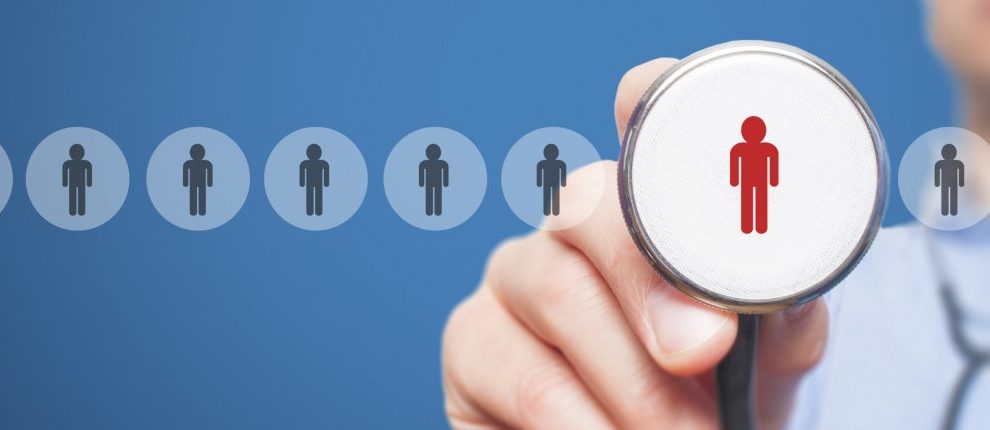If you’re like me, then you’re probably looking down every so often at your Fitbit or Apple Watch to see if you’re making your step goals for the day. Let’s be honest, the step count matters. However, you probably don’t think what happens to the data that your smart watch collects or how the government could use it to make your life easier and healthier. But the Department of Veterans Affairs is looking at the data, closely. The VA is working to utilize mobile technology to allow veterans to access health care remotely and easier.
GovLoop and Red Hat’s Putting Mobile Health to Work roundtable offered an interactive discussion on how the Department of Veterans Affairs is utilizing mobile health to better cater to their audience. William Cerniuk, Co-Director of VA Mobile Provider Program at the Department of Veterans Affairs; Neil Evans, MD, Chief Officer at the office of Connected Care, Veterans Health Administration at the Department of Veterans Affairs; and Steve Brady, Federal Mobile Specialists at Red Hat offered an inside perspective on initial mobile health app development and the overall process of moving towards mobile health.
Getting Started
The first step on a path to mobile health is often the hardest. It is challenging because many program offices across government are working on developing different applications, but they’re operating in silos. Brady explained you can counter this challenge by “taking a look at your architecture and seeing how your whole agency is using mobility then prioritize applications based on cost, adoption, need, and how it fits into your mission.”
There is a perception that going mobile is so easy that any sixteen year old can do it in their basement. However, for agencies, the process surrounding the decision needs some discipline around the architecture and how you are going to cater to your audience. “You can’t just build an app to build an app,” Evans emphasized.
Making Meaning
When the VA first dove into mobile health they were largely pushing standalone and coaching applications that did not collect data to send to a back end system. As they moved forward, the VA’s mobile health applications now allow veterans to interact with their health care teams remotely and collect data that feeds to a back end system. “This gives veterans a more meaningful experience and we are working towards even more interaction through transactions, communications, and bidirectional exchange of health care,” Evans said. Cerniuk added that through this, “we can use technology for an actual diagnosis as well as a primer that precedes an individual receiving in-person healthcare.”
Additionally, Evans explained that, “there is not a single day in the last 15 years where I thought at the end of the day that I have closed the book on the day and completely taken care of all my patients. The life of a primary care doctor is the life of processing an avalanche of data.” Consequently, the shift from not collecting mobile health data to collecting and analyzing that data allows the technology to act as a middleman so the provider is not processing so much data and risking missing something important.
There is an optimism that surrounds this shift, but also a bit of anxiety that comes with venturing into uncharted territory. Evans explained that the VA doesn’t currently have a framework that explains what to do with patient generated data once it is collected. Moving forward, it is imperative to understand that there may not be a one size fits all model for each patient and agencies must decide when they will review data, what analytics they will need to put on top of it, and what communication model to establish surrounding the data. This is challenging to do when there is not a uniform profile of individuals who are generating data.
Catering to Individuals
Evans explained that there are two types of patients: motivated patients who use mobility technology to facilitate systems-to-systems health information exchange and those who are not. It is important to identify the difference because in the latter situation, mobile system-to-system health information exchange is crucial to being able to effectively provide healthcare to the individual. However, for the former patient, mobile health allows the patient to take charge of their health care.
While much of mobile health is moving towards individualized health care, Brady explained that the mobile part does not have to be individualized. “At the end of the day if you look at most apps, a lot are really similar so you can template out a lot of this stuff and make your process more efficient,” he said. Finding the balance between catering to individual users and developing the most efficient applications is crucial for continual development of mobile health within agencies.
Looking forward, the VA and other agencies looking to work on mobile health have an exciting and rewarding road ahead. Evans explained, “technology is interesting but in the end it really is about how we are improving the health of our target population and the health of individuals.”
For more information on how the government is utilizing mobile health check out GovLoop’s recent guide “Putting Your Health in Your Pocket: How Government is Investing in Mobile Health.”






Leave a Reply
You must be logged in to post a comment.